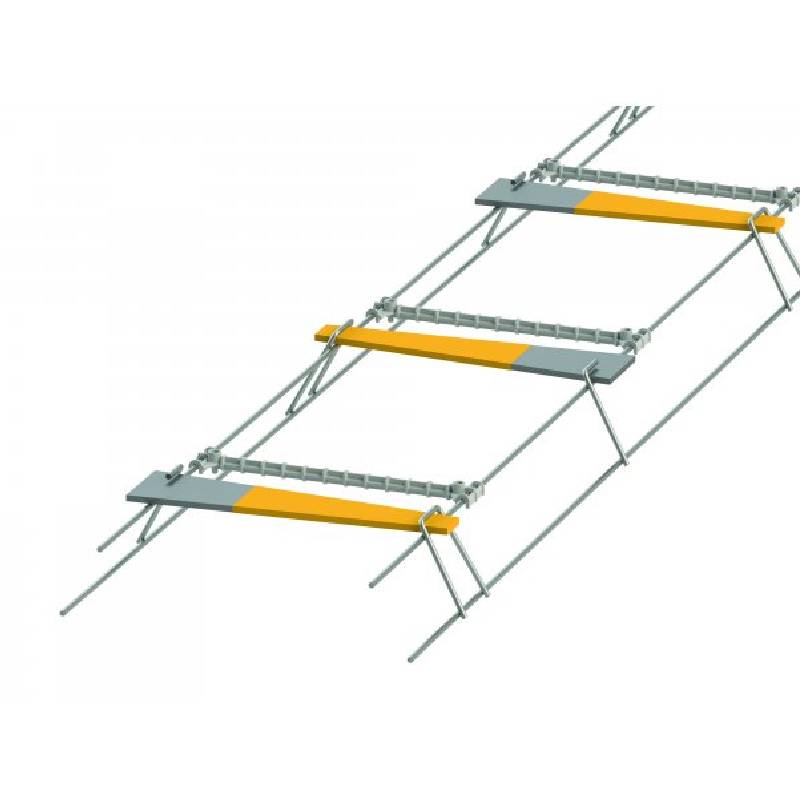
- Mobile Phone
- +8613931874955
- sales@cntcmetal.com
Innovative Solutions for Efficient Rebar Positioning in Construction Projects and Engineering Applications
The Importance of Rebar Positioners in Modern Construction
In the world of construction, the integrity and safety of structures are paramount. One crucial component that ensures the stability of concrete structures is rebar, or reinforcing bar. It provides strength and support to various concrete elements, but proper placement is essential for its effectiveness. This is where rebar positioners come into play. These devices are essential tools in the construction industry, particularly in managing and placing rebar in concrete forms.
Rebar positioners facilitate the accurate placement of reinforcing bars in concrete structures such as bridges, buildings, and highways. They serve to maintain the required spacing and alignment of rebar, which is vital for achieving the needed load-bearing capacity. Misplaced or misaligned rebar can lead to structural failures, which can have catastrophic consequences.
One of the most significant benefits of using rebar positioners is the efficiency they bring to the construction process. Traditionally, workers would spend considerable time manually placing rebar, ensuring that everything was aligned correctly. This painstaking process not only increased labor costs but also introduced human error, which could lead to costly rework and delays. Rebar positioners streamline this task, allowing for quicker and more accurate placement. With these tools, workers can focus on other essential aspects of the construction process, ultimately speeding up project completion times.
Rebar positioners come in various forms, including spacers, chairs, and ties. Each type serves a specific purpose, depending on the project requirements. Spacers, for example, maintain the correct depth of rebar in the pour, ensuring that the bars are adequately protected from environmental elements. Chairs are used to elevate the rebar and keep it off the ground, preventing contamination from soil or debris. Ties, on the other hand, help secure the rebar in place, ensuring that it does not shift during the concrete pouring process.
rebar positioners

The use of rebar positioners also contributes to improved safety on construction sites. Properly placed rebar reduces the risk of structural failure, which can compromise the safety of workers and the public. Moreover, by minimizing manual handling, positioners can reduce the likelihood of injuries related to lifting heavy materials. Modern rebar positioners are often designed with ergonomic features that help reduce strain on workers, further enhancing safety on site.
In addition to their safety and efficiency benefits, rebar positioners can also be cost-effective in the long run. While there may be an initial investment in purchasing these tools, the reduction in labor costs, increased productivity, and diminished risk of structural failures make them a wise investment. Effective use of rebar positioners can lead to significant savings by reducing the need for materials and labor associated with correcting placement errors.
As the construction industry continues to evolve with advancements in technology and techniques, the role of rebar positioners remains critical. More builders are recognizing the value of these tools in achieving high-quality results with faster turnaround times. With innovations in design, such as adjustable and modular positioners, the versatility and functionality of these tools are only expected to improve.
In conclusion, rebar positioners are indispensable aids in the construction industry. They ensure the correct placement, enhance safety, increase efficiency, and ultimately contribute to the overall integrity of concrete structures. As construction projects become more complex, investing in effective rebar positioning solutions will be essential for builders looking to maintain high standards and meet project deadlines. The future of construction depends on innovation, and rebar positioners are a prime example of how thoughtful tools can lead to safer and more efficient building practices.
share:
-
Your Source for Concrete Wall Ties and Masonry AccessoriesNewsJul.10,2025
-
Unlocking the Power of Iron Wire for Every ProjectNewsJul.10,2025
-
Explore Advanced Chain Wire and Stainless Steel Mesh FencingNewsJul.10,2025
-
Discover the Benefits of Annealed Wire ProductsNewsJul.10,2025
-
Discover China Stainless Steel Wire Mesh SolutionsNewsJul.10,2025
-
Build with Confidence Using High-Performance Masonry AccessoriesNewsJul.10,2025
-
Why Sacrificial Formwork Is Redefining Underground ConstructionNewsJun.06,2025



















